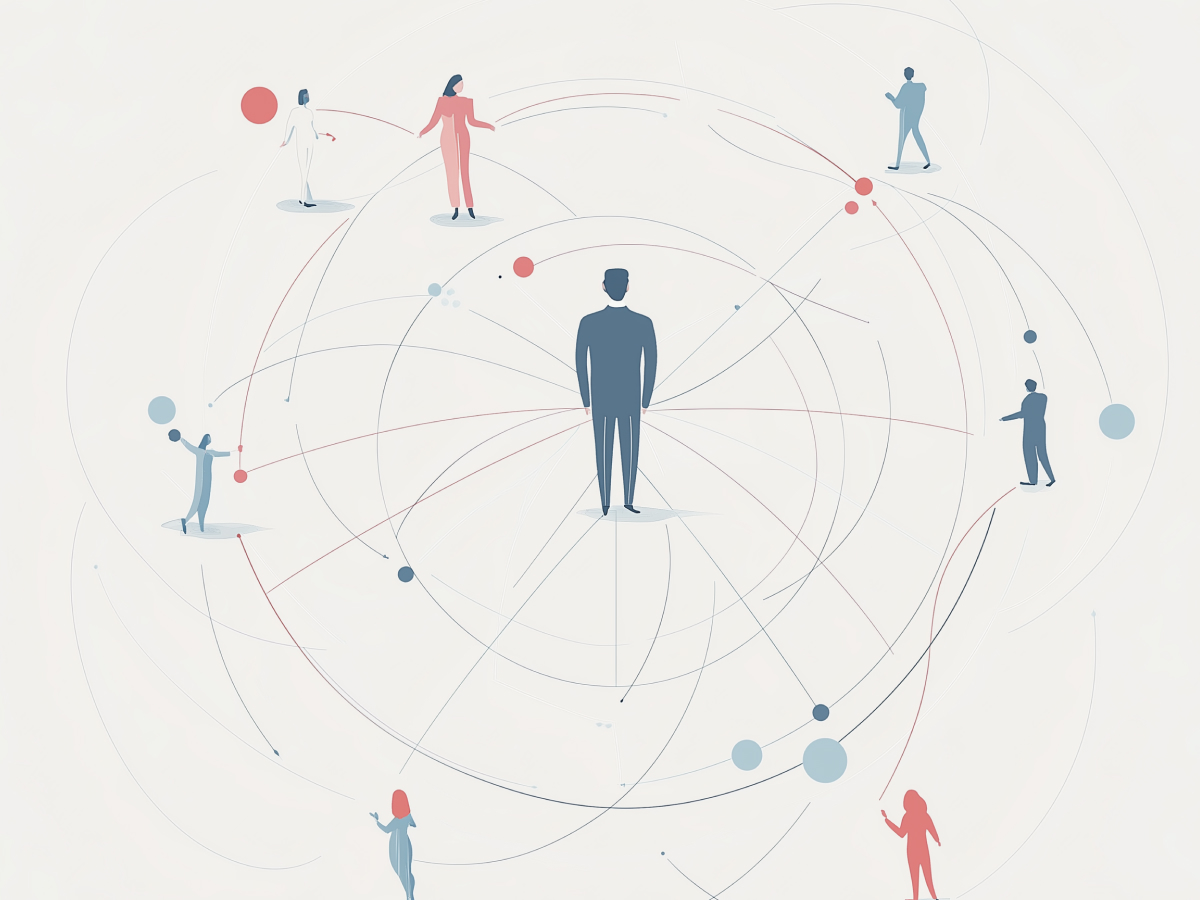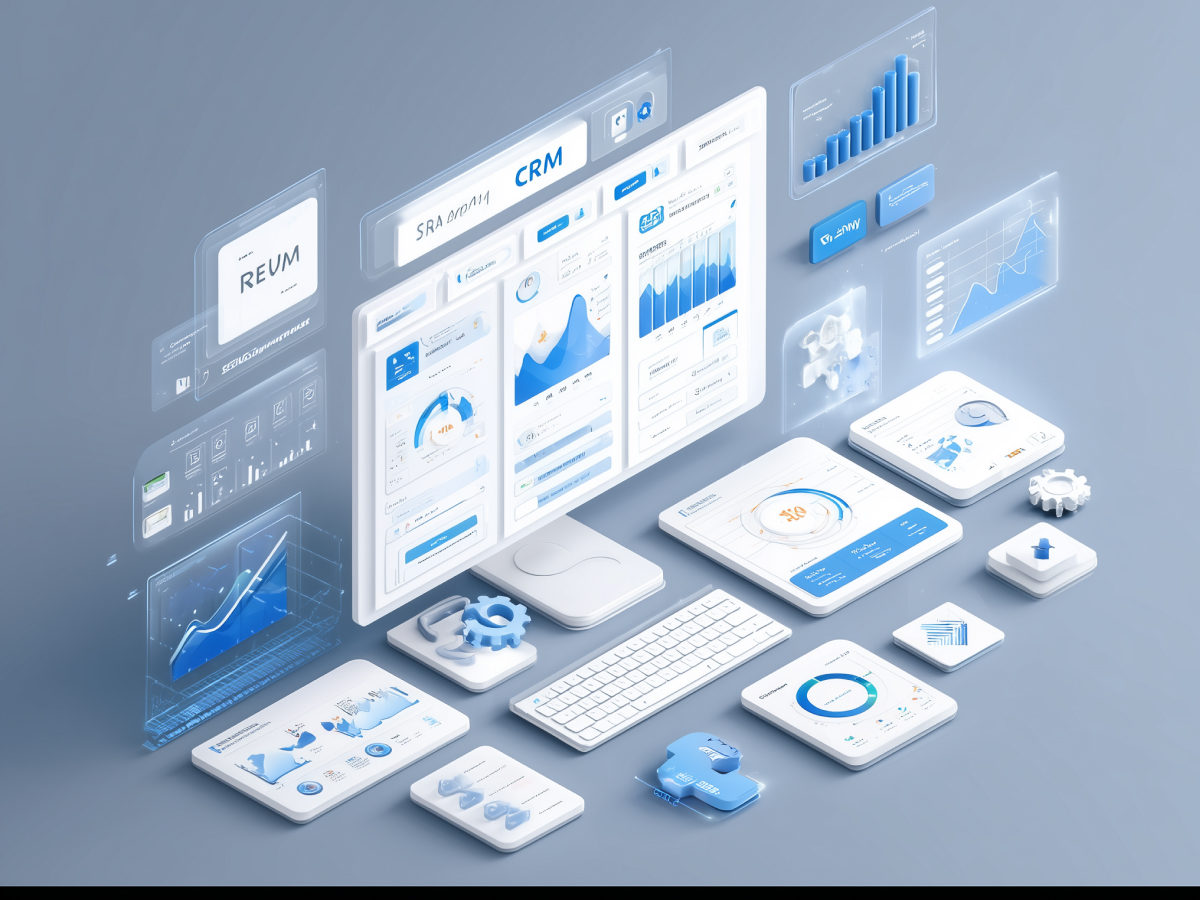Human-AI collaboration is growing into a complementary partnership
AI doesn’t replace people. It scales them. In 2025, we’re seeing what that really looks like. Machines are taking care of tasks that are repetitive, data-heavy, or too fast-moving for humans to handle efficiently. That frees up your workforce to focus on the decisions and work that truly require experience, judgment, creativity, and ethics. The value of your people just increased, assuming you give them the right conditions to apply those high-order skills.
A lot of confusion disappears once you stop thinking about AI as a threat and start seeing it as a collaborator, an extremely fast one. The companies that get this balance right are focusing their machine capabilities on parsing data, spotting patterns, and optimizing efficiency. Meanwhile, their human teams do what machines can’t: innovate, empathize, and decide what’s right when there’s no clear formula. Designing workflows that reflect this symbiosis has become the baseline for future-ready organizations.
Bill Pappas, Executive Vice President and Head of Global Technology and Operations at MetLife, sees this clearly. He says, “The key is designing workflows that maximize these complementary strengths. AI augments human capabilities rather than replacing them. Organizations that thrive will be those that embrace AI as a tool to enhance human potential, not diminish it.” That’s exactly right. If you treat AI as a replacement tool, you’re limiting its potential, and yours.
Organizational adaptability and AI literacy are critical for integration
You can’t hand people a powerful tool and expect them to figure it out by instinct. Especially not with AI. If you want your organization to use it well, you have to raise the level of understanding across the board. That goes for your engineers and your executives. It’s not just about knowing how the tech works, it’s about recognizing where it fits into your business, what risks it introduces, and how to implement it responsibly.
CIOs and leadership teams need to lead with clarity. That means being honest about what AI can and can’t do. It means talking about privacy, bias, and accountability openly, before someone’s asking uncomfortable questions. It also means getting out in front of these conversations, not leaving it to IT after deployment. If employees don’t trust the system, or the leadership rolling it out, they won’t use it effectively, and they won’t raise alerts when things go wrong.
The shift here isn’t just technical, it’s cultural. Leaders need to build trust in AI outputs by ensuring people know how it works and where the guardrails are. That starts with competence. It’s on you and your executive team to become fluent in AI’s strategic applications. And that fluency needs to cascade down. Otherwise, you risk a serious misalignment between what your business can do with AI and what it actually does.
Again, Bill Pappas at MetLife nailed the point: “This shift requires embracing organizational change, fostering a culture of adaptability, and championing AI literacy across all levels.” It’s not just about rolling out tools. It’s about equipping people with the mindset and knowledge to drive meaningful outcomes with them. That’s how you build a future where people and machines move with purpose together.
AI will redefine job roles and expand access to new opportunities
We should stop asking whether AI will eliminate jobs. That’s already happening, and it’s not the story. The bigger picture is that AI is also creating new categories of work, opening up spaces in industries that were previously closed off to people without deep technical expertise. What used to require specialized credentials can now be accessed with the support of smarter, more intuitive systems. That’s a net gain for innovation and economic growth.
This shift will raise the value of human attributes that machines don’t excel at, clear communication, emotional intelligence, creative problem solving, ethical judgment. These aren’t soft skills. They’re now core competencies. The labor market is moving toward roles where mastering human interaction is more important than mastering syntax or technical specs. Companies that understand and act on this now will find themselves ahead, both in talent development and customer experience.
Nabil Bukhari, CTO at Extreme Networks, explains it well: “While it’s true that AI will replace some jobs, it will also create new ones and reduce the barrier of entry into many markets that have traditionally been closed to just a technical or specialized group.” That’s an important shift. AI enables more people to contribute, but to lead in this landscape, you need to build a workforce ready to take on evolving responsibilities with flexibility and strong human judgment.
Clear role definitions and collaboration frameworks
If you allow AI to operate without constraints, it can generate unpredictable results, some helpful, some not. That’s why one of the most important aspects of implementation is defining what an AI system should do, and what it shouldn’t. You don’t add AI to your team and hope it figures things out. Like any high-value contributor, it needs direction, scope, and clear alignment with your business objectives.
Creating strong deployment guidelines isn’t just process, it’s risk management. When AI systems are given broad access without clear role definitions, they can take on tasks that were never intended, which drains resources and creates uncertainty across teams. That breaks trust quickly. Executives need to ensure that every AI implementation includes upfront decisions about responsibility, scope, expected output, and supervision.
As Nabil Bukhari from Extreme Networks puts it, “Just as you would with a human employee, create a job description and clear specifications of the roles and responsibilities of the [AI] agent before implementing.” That type of planning keeps your AI aligned with business goals, and your people aligned with how it assists, not overtakes, operational flow. It’s about structure and clarity, both of which pay off the moment something scales.
AI adoption should be viewed as a strategic business transformation
AI is not a side project for your IT department. It’s a business transformation. When implemented properly, it changes how your organization operates, from decision timelines to product development to customer-facing interactions. The organizations that treat AI as a narrow technical tool will miss significant value, both in internal efficiency and external competitiveness.
The real challenge isn’t just about deploying models; it’s about aligning those deployments with your company’s long-term direction. That includes compliance with emerging regulations, ethical choices around data usage, and the ability to move quickly without compromising trust. Leadership must get deeply engaged, not just in approving resources, but in setting frameworks and guardrails that define success.
AI also forces transparency. Your people want to know if algorithms are monitoring performance, influencing decisions, or generating content. Ignoring those questions doesn’t make them go away, it creates skepticism and slows adoption. When leaders clearly communicate how AI is used and why, trust goes up, and execution speeds up.
Nabil Bukhari, CTO at Extreme Networks, was clear about this: “A big mistake is believing that AI is a technology issue when it’s a larger business issue.” That mindset shift, from tool to strategic driver, is what separates companies that merely install AI from those that gain value from it.
Combining human insight with AI tools
When AI is treated as a force multiplier for human capability, you see a significant acceleration in output and market response. This isn’t theoretical, it’s already happening. The businesses that blend AI tools with deep human domain knowledge are outperforming those that rely solely on one or the other. High-impact use cases are showing up across marketing, sales, product development, and operations.
The reason’s simple: AI can generate insights and execute defined tasks at scale, but it doesn’t understand brand nuance or customer emotion. Your people do. The strategic advantage comes from giving teams the tools to move fast with AI, but also the permission to override or refine what AI suggests based on context, something algorithms don’t grasp yet.
Marcel Hollerbach, Chief Innovation Officer at Productsup, has seen this play out clearly: “Combining the expertise, skills, and experience of your people with AI tools is where you really see an acceleration in go-to-market and a boost in performance.” That’s the formula for speed and precision, equip human teams with reliable AI infrastructure, then let their judgment drive the outcome.
Ethical AI design and transparent practices
If people inside your company don’t trust the way AI is being used, it won’t matter how advanced your systems are. Adoption will stall, and misuse will go unchecked. The solution isn’t more restrictions, it’s transparency. Show your employees how AI supports decisions, when it evaluates performance, and where it’s embedded in communication systems. When usage is clear, support increases.
Trust is built on clarity. If a system is determining outcomes that affect someone’s work, that person deserves to know how that system works, or at least the logic behind it. Treat this as a leadership priority, not a compliance task. Honest communication about AI’s role, limitations, and governance enables open questions and early feedback, which improves the system over time.
This isn’t just about protecting the organization from backlash. It’s about enabling better performance. Individuals who trust AI outputs are more likely to engage productively with the tools and less likely to reject or ignore their input. That’s what scales a system the right way.
Marcel Hollerbach, Chief Innovation Officer at Productsup, put it simply: “CIOs should focus on fostering transparency and the ethical use of AI tools, setting the standard for responsible AI adoption.” That clarity should apply to everything from decision-making processes to performance analysis. It’s not a burden, it’s a competitive advantage.
Human-like AI design features enhance user adoption and interaction
The way an AI system interacts with people matters. Systems that respond with natural speech rhythms, that pause in the right places, or use language patterns people find familiar, these are the AI designs that get used consistently. Functionality is only one part of adoption. User experience, the kind that feels intuitive, often makes the final difference.
Human-centered design isn’t about faking personality. It’s about reducing friction. When users engage with AI that behaves in a more natural way, they tend to trust it more, because the interaction feels less robotic and more collaborative. That trust leads to increased use, more meaningful inputs, and faster learning curves across teams.
Frederic Miskawi, Vice President and AI Innovation Expert Services Lead at CGI, highlighted this shift: “Examples such as Sesame.com’s AI model, Maya, illustrate how deliberate inclusion of human-like imperfections… can enhance user comfort.” He expects this design principle to become common by 2026, and he’s right. These adjustments are subtle but powerful. They don’t make systems appear human. They make systems easier to work with, and that’s what drives adoption.
Agentic AI is reshaping enterprise operations by automating complex tasks
The next evolution of AI is not about responding to commands, it’s about handling complete tasks autonomously. Agentic AI is designed to take initiative, make decisions based on context, and solve problems without human micro-management. That has massive implications for operational models, especially in areas like software development, IT operations, and back-end business systems.
What used to require large development teams or intense manual oversight is now being streamlined by AI systems that can refine code, track anomalies, apply fixes, and even deploy updates. That doesn’t eliminate the need for engineers, it raises the bar for what they can accomplish. Human experts are now positioned to supervise and optimize far more sophisticated systems while offloading routine complexity to AI agents.
Leadership needs to plan around this. Processes will shift, timelines will shrink, and expectations around delivery will increase. CIOs and CTOs are already seeing their roles change, with more focus on integrating agentic AI across business-critical workflows. Their oversight is no longer just about infrastructure, it’s also about orchestrating these intelligent agents across departments.
Frederic Miskawi, Vice President and AI Innovation Expert Services Lead at CGI, put it this way: “Today’s executives face transformative decisions driven by the accelerated adoption of artificial intelligence, particularly agentic AI, fundamentally altering traditional business operations and workforce management.” It’s happening quickly. Those who move now will define the standards others follow.
Organizational readiness must catch up to the pace of AI innovation
AI is advancing faster than most organizations can handle. That disconnect is a risk. New models and systems are hitting the market with capabilities that can drive serious competitive advantage. But without infrastructure, alignment, and a clear operating strategy, businesses can’t capture the full benefit. They also put themselves at financial and operational risk if they scale AI without control.
What works is staying agile. This means investing in upgradeable infrastructure, especially computing power, like GPUs, and aligning business strategy with how AI systems are evolving. The right approach isn’t a fixed roadmap. It’s continuous learning, strategy adaptation, and incremental implementation. That gives your teams space to adjust and scale systems based on real impact, not projections.
Most companies still focus too much on tools and not enough on preparedness. Leadership has to set a pace that supports experimentation while maintaining stability. That requires direct involvement in resourcing, team structure, and workflow design around AI dependencies.
Frederic Miskawi from CGI makes the point clearly: AI innovation “is already outpacing organizational readiness… CIOs must balance infrastructure investments, like GPU resource allocation, with flexibility in computing strategies.” Business leaders need to close that gap, or someone else will do it first, faster, and more effectively.
Soft leadership skills are crucial to navigate AI-driven organizational change
As AI becomes more integrated into business operations, leadership is shifting. It’s not enough to understand the technology, you need to lead people through change with clarity, decisiveness, and trust. That takes strong communication, strategic focus, and the ability to define and align goals across the organization. Without that, AI investments underdeliver, and cultural resistance takes hold.
Effective leaders know how to translate complex developments into focused actions. When you’re introducing AI across functions, people need context, why it matters, what outcomes are expected, and what roles are changing. The clarity you bring as a leader sets the tone for the organization. It frames change as purposeful, not chaotic.
AI doesn’t lower the value of leadership, it increases it. The tools are growing more capable. That puts more pressure on human direction. Your teams will follow your lead when it comes to how they view risk, responsibility, and innovation. If you’re vague, they’ll hesitate. If you’re clear, they’ll execute.
Frederic Miskawi, Vice President at CGI, made this explicit: “Key among these [leadership skills] are advanced communication skills, clear strategic vision, goal-oriented thinking, and robust alignment capabilities.” That’s where the real leverage is. Your ability to drive successful AI initiatives depends less on the system’s capability, and more on your own.
CIOs must lead the way in shaping the future of human-machine dynamics
In most organizations, the CIO is best positioned to lead AI transformation. You have the technical insight, visibility across functions, and experience with implementing complex systems. What’s changing now is the scale, and the strategic importance. CIOs aren’t just tech leaders anymore. You’re the architects of the company’s future workforce and operational model.
That means stepping into a more visible role. You’re not just integrating tools, you’re shaping how people work with machines. You need to anticipate impacts on process, performance, and talent. You also need to address internal fears. AI adoption brings resistance, driven by questions that aren’t always technical. People want to know what’s real, what’s hype, and how it’s going to change their job. You’re expected to provide answers.
This is an execution moment. You don’t need elaborate predictions about AI’s long-term potential, you need to define what the organization does about it now. Build trust with sharp decision-making and clear communication. Guide the company through transition with transparency and competence.
The message from the source material is simple: CIOs need to lead, not just because they’re equipped to, but because delaying leadership creates a vacuum. The further AI advances, the more essential your role becomes in grounding it in business objectives, protecting values, and generating measurable progress.
Concluding thoughts
If you’re leading a company in 2025, you’re leading it through AI, whether you planned for it or not. The integration of human and machine capability is already reshaping how work gets done, what talent looks like, and how decisions are made. Ignoring that isn’t an option. What matters now is how you lead through it with clarity, speed, and purpose.
The fundamentals haven’t changed. People need context. Systems need structure. Trust needs to be earned. AI doesn’t remove the need for leadership, it raises the stakes. The best leaders right now aren’t asking how to control AI. They’re asking how to design organizations where it adds meaningful value while keeping people engaged, informed, and empowered.
This isn’t about chasing trends. It’s about building smarter companies that can adapt faster and operate better. Get your foundations right, transparency, ethics, fluency, and strong human judgment, then scale from there. The companies that act with discipline and vision will define the next era of work. Everyone else will spend their time catching up.





